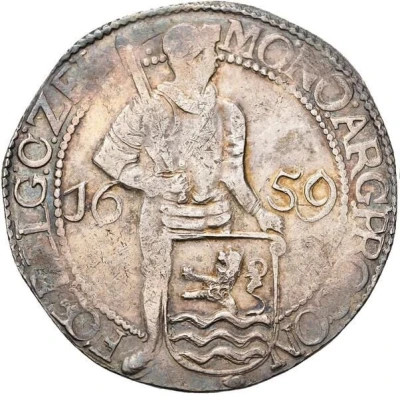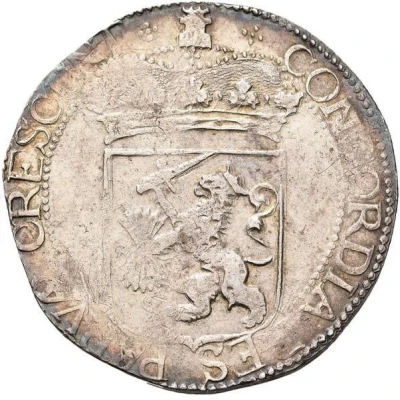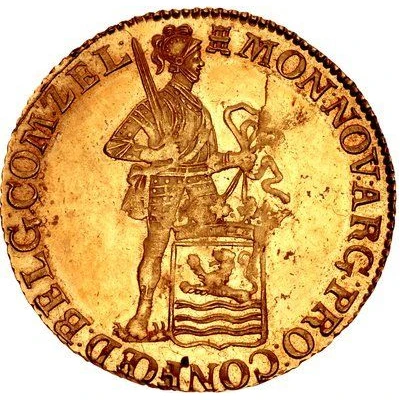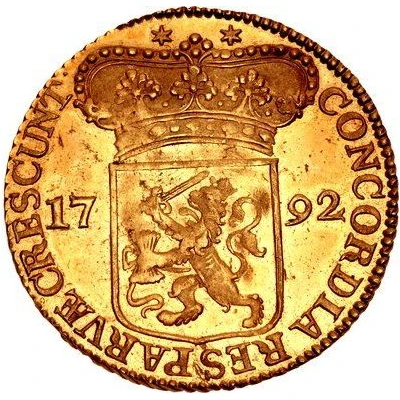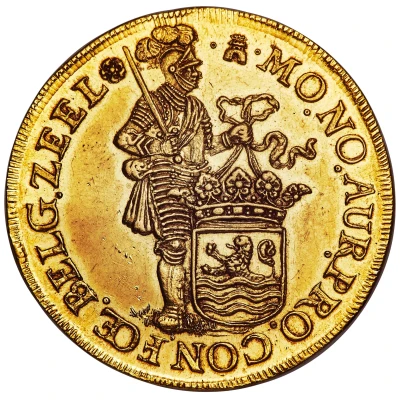
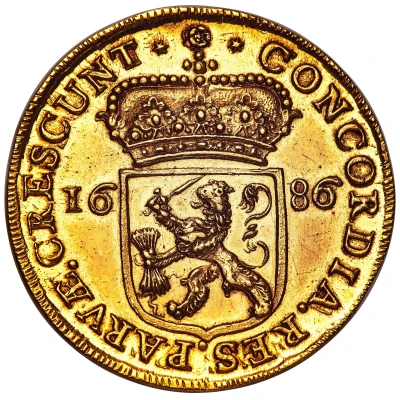

© Heritage Auctions
Silver ducat or Rijksdaalder Gold pattern; weight of 10 ducats
| Gold | 34.63 g | 40 mm |
| Issuer | Province of Zeeland (Dutch Republic) |
|---|---|
| Type | Pattern |
| Years | 1682-1686 |
| Value | 1 Rijksdaalder or Sikver ducat (2.5) |
| Currency | Gulden (1581-1795) |
| Composition | Gold |
| Weight | 34.63 g |
| Diameter | 40 mm |
| Shape | Round |
| Demonetized | Yes |
| Updated | 2024-10-06 |
| Numista | N#352142 |
|---|---|
| Rarity index | 100% |
Reverse
Crowned arms
Script: Latin
Lettering:
CONCORDIA. RES. PARVÆ. CRESCUNT
16 86
Comment
There is some confusion about this type.In a January 2023 auction, Heritage calls this a rijksdaalder pattern, but this is unlikely. Traditionally the rijksdaalder features a mid-length bust, not a standing knight. Holland struck a gold rijksdaalder pattern in the 1680s with a mid-length bust typical of rijksdaalders, which is completely different (see first link).
The KM catalog for Zeeland lists high weight gold rijksdaalder patterns for 1682 (Pn3 see second link) and 1684 (Pn6) but with no photos, but says they look like Zeeland KM17, a traditional rijksdaalder with mid-length bust.
Heritage does not refer to these Zeeland types listed in KM, so they do not think it is these patterns (yet they still call it a rijksdaalder).
The design of this coin/pattern is the one typical of the silver ducat, and the size is comparable. Gold off-metal strikes of silver ducats (and their fractions) are known, but were struck later (see second link).
So this coin is best thought of as a silver ducat pattern or off-metal strike, but rijksdaalder is retained in the Numista title since the Heritage auction record is the only example easily accessible in the numismatic literature.
Interesting fact
One interesting fact about the Pattern Silver ducat or Rijksdaalder from Province of Zeeland (Dutch Republic) is that it was minted with a unique gold pattern, which was not commonly used in coinage at that time. The gold pattern was used to create a distinctive design that would stand out from other coins in circulation. This fact makes the coin particularly interesting for collectors and numismatists who are interested in rare and unique coins.
